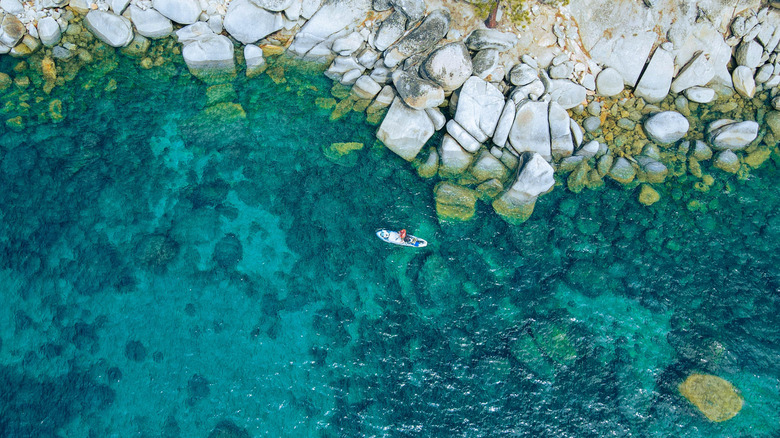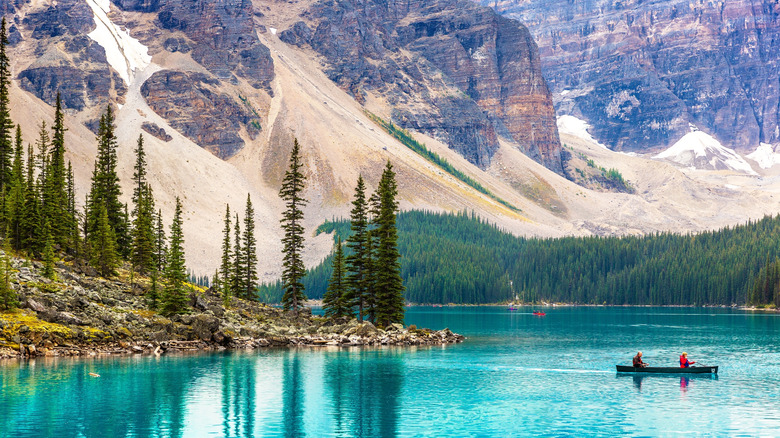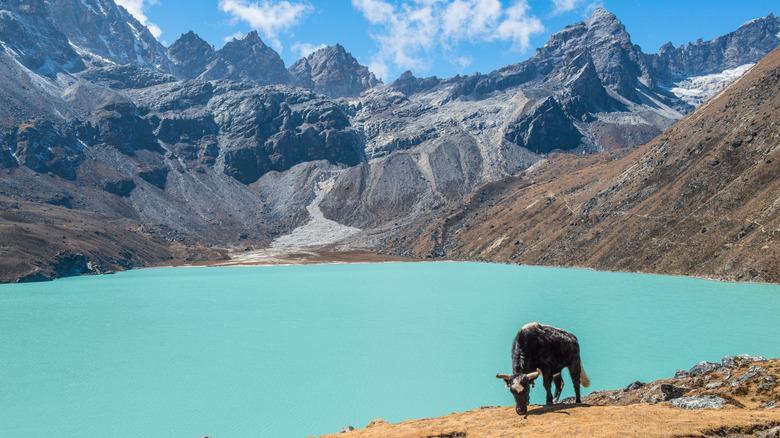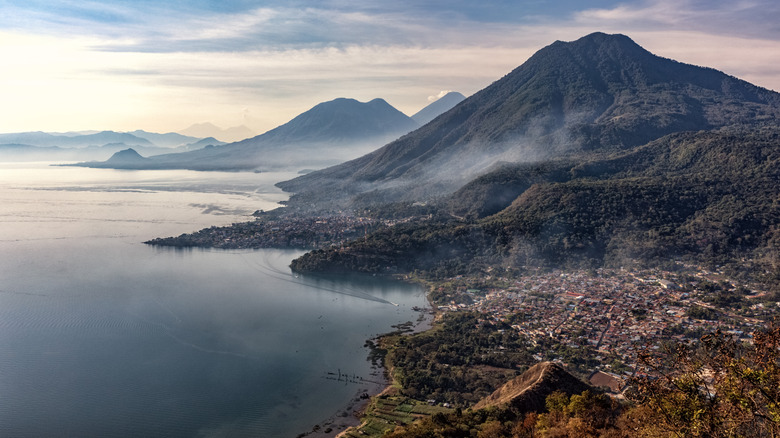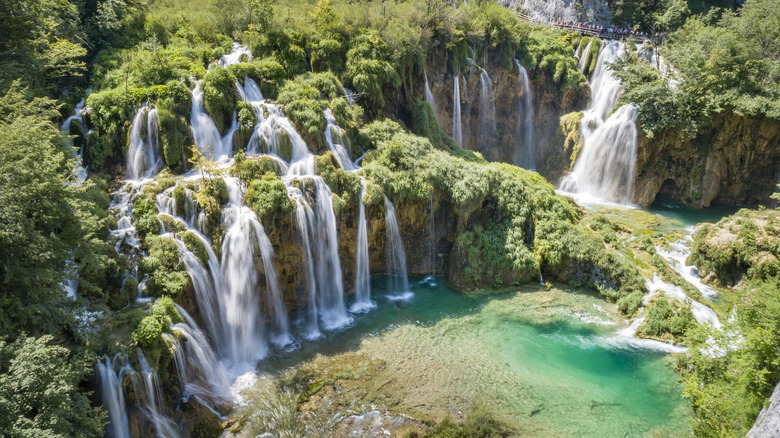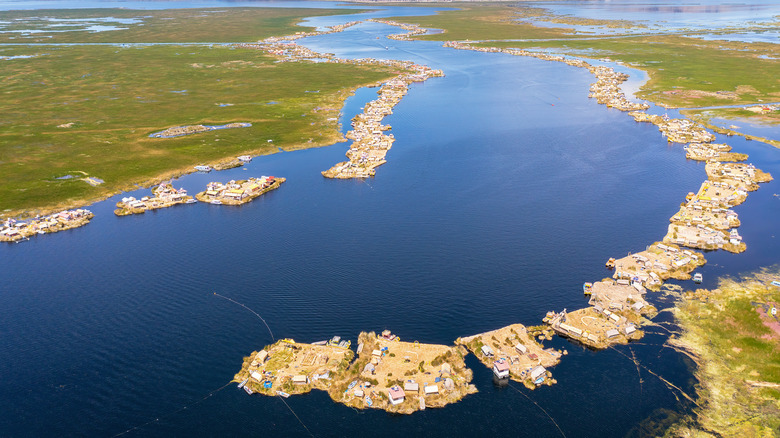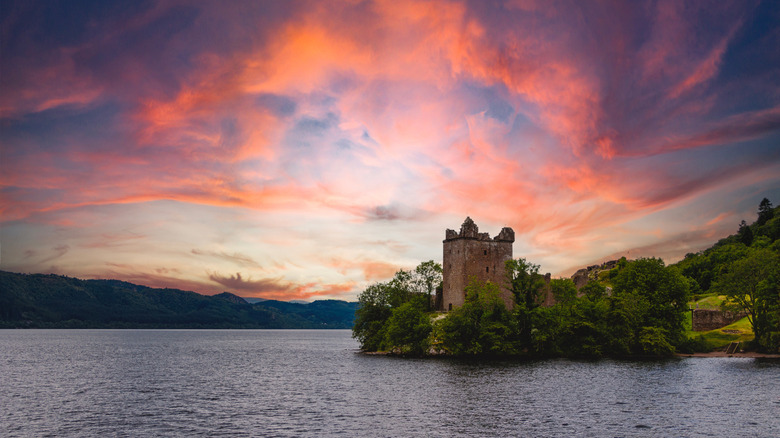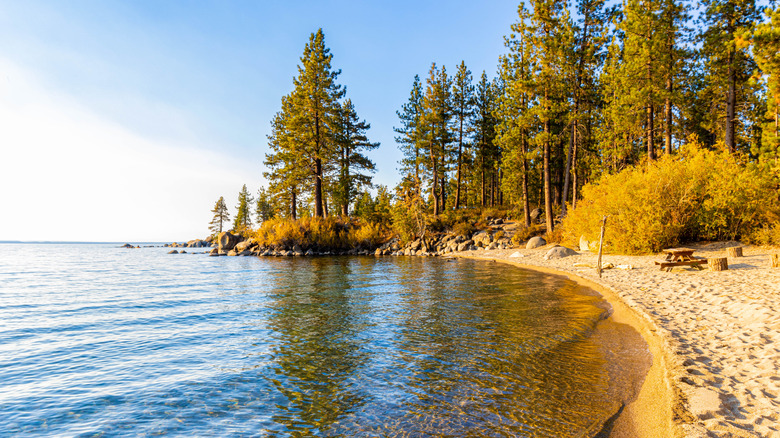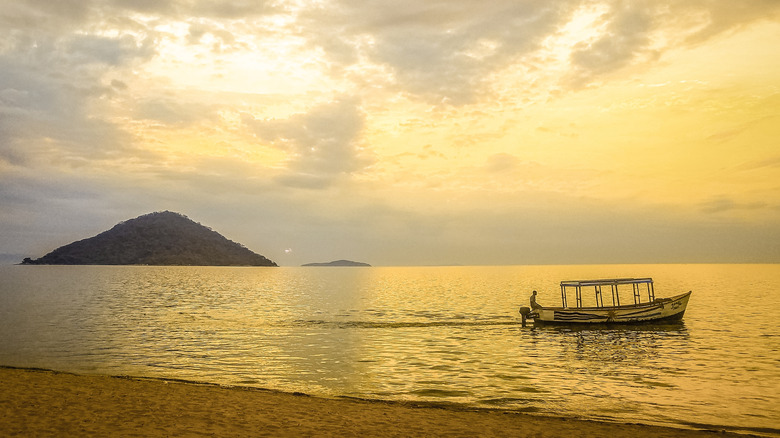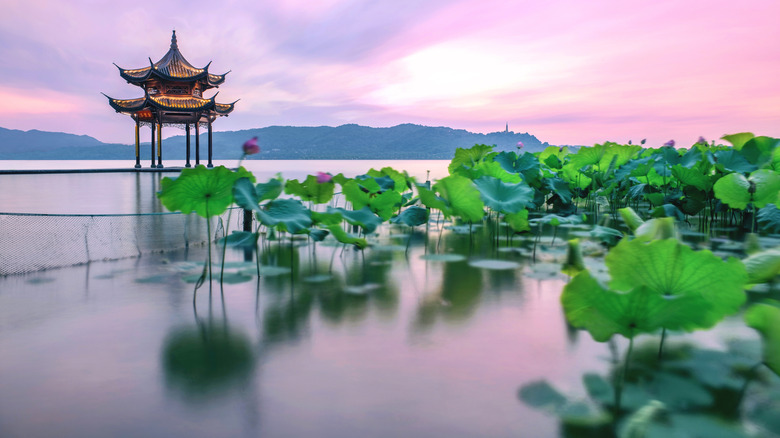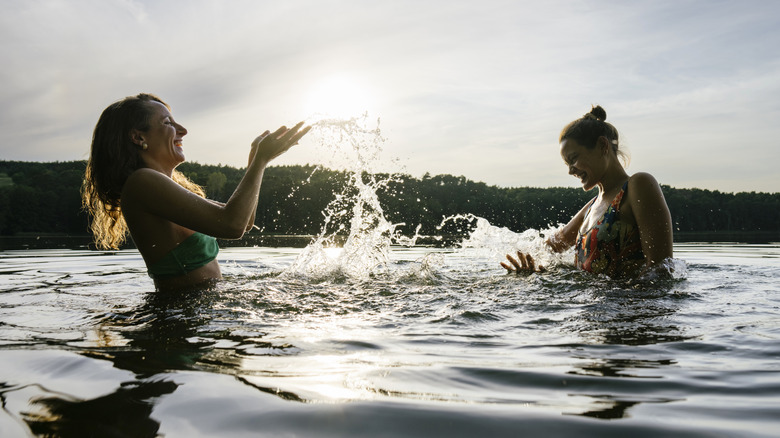The Best Lakes In The World Offer Sandy Beaches, Gentle Waves, And Breathtaking Terrain, According To Research
The most famous lakes in the world are more than just bodies of water. They are places where imaginations collide with natural spectacle, stages for myth and folklore, windows into the unknown, and sanctuaries of peace and tranquility. The most beautiful lakes may well have those desired sandy beaches and crystal-clear waters, but they can equally possess the raw drama of wind, fog, and crashing waterfalls. They can also make the familiar seem otherworldly, with reflections so perfect they confuse the senses, or colors so vivid they belong in fairy tales.
The lakes we have chosen are spread out across the continents, yet each retains its own flavor. They could involve a long expedition to a remote location or a serene escape from a bustling city. You can step into layers of geology, myth, tradition, or adventure, where the chill bite of mountain air, the invigorating smell of pine, and the gentle sound of lapping water unite to touch the soul. Alternatively, you could simply spend hours on a sandy shore watching ripples unfold and basking in the warm sunshine. Fortunately, there are plenty of remarkable lakes on the planet for experiencing pristine waters and dramatic landscapes — and here are a few of the best.
Moraine Lake, Canada
Lake Louise may get a lot of the attention when it comes to Canadian lakes, but the views around Moraine Lake in Banff National Park are incredible. Set in the Valley of the Ten Peaks, each towering mountain contributes to a stunning backdrop of snow, woodland, and sheer rock faces. The thick conifer forests and rugged rocky terrain tumble down to the lake edge, where the glistening turquoise water creates an otherworldly glow. This color is created by fine rock particles in the water refracting sunlight, and it's this simple process that has created one of Canada's most iconic sites.
Depending on the day's conditions, Moraine Lake offers calm, glassy waters with surreal reflections. However, other days can bring eerie fog and howling mountain winds. Being there for the early morning is best. You might get a soft mist drifting over the tranquil water, while the crowds are thin and the winds are usually mild at worst. This is the optimum time to hire a kayak and drift out to the middle of the lake for some quiet moments and reflection.
However, admiring the scene from the area's many viewpoints is equally mesmerizing. The Rockpile Trail is the one to take for the legendary "Twenty Dollar Bill view." Navigation is pretty easy, and the trek is fairly short, but you do need to climb around 120 steps to get to the iconic vantage point that once appeared on the Canadian currency. Then there is winter, when you can try something more challenging with snowshoes. You'll have the place practically to yourself, and you'll experience a more muted spectacle.
Lake Bled, Slovenia
Lake Bled is like a mirror held up to the Slovenian sky. The water is so still that it seems the clouds are trapped beneath, while the surrounding mountains lean in to admire their own reflections. In the center of the lake is the only natural island left in the entire country. And sitting proudly upon it is the Church of the Assumption of the Blessed Virgin Mary. You can ride a pletna, a traditional gondola-like boat steered by an oarsman, out to the island and follow the same path that pilgrims and visitors have taken for hundreds of years. Once you climb the 99 steps to the baroque church, you'll find intricate frescoes, ornate fixtures, and lots of history dating back to the early Middle Ages. At the altar, you'll discover the legendary wishing bell. Pull it once, and it will grant you any wish.
Once it has miraculously come true, you can admire the panoramic views from the church tower. The surrounding emerald waters, lush woodland banks, and the towering Julian Alps — including the country's iconic tricorn peak, Mount Triglav — all unite to create this small slice of paradise. This combination of nature, tradition, and history makes Lake Bled one of Slovenia's top tourist attractions, but there is plenty else to enjoy on a visit. Hiking options abound, with all levels of trails from an easy 4-mile walk around the lake to more challenging alpine routes. And, while there are only pebble beaches, you can still laze on the grassy banks, paddle a hired boat at your own pace, swim in the calm, turquoise waters, give paddleboarding or kayaking a go, or just enjoy any of Bled's casual cafes and low-key bars.
Gokyo Lakes, Nepal
A journey to this series of six glacial lakes is exactly that: a journey. And what a journey it is. They are located high up in the Himalayas between 15,420 and 16,404 feet (4,700 and 5,000 meters), and the only way to get to them is on foot. Well, that's not entirely true. The first part of the journey involves a white-knuckle flight that lands on one of the world's scariest airport runways. It may get the heart pounding, but flying in front of Himalayan titans like a mosquito approaching a skyscraper is an experience you'll never forget.
Next, you'll need to take a strenuous climb to the trading and trekking hub of Namche Bazaar. From there, you'll get your first glimpses of Mount Everest, which is where most trekkers are going. But turning left after Namche when everyone else is turning right means you'll eventually find yourself in the stunning setting of Gokyo village. This entire area buzzes with blue waters reflecting snowcapped peaks, and you might feel like you're on top of the world — and that's because you are.
Spring is the best time to tackle this incredible hiking trail in Nepal. This is when the rhododendrons bloom in shades of red and pink. Come winter, the lakes are frozen solid. They are encircled by cloud-puncturing peaks, including Cho Oyu, the world's sixth-highest mountain. Take a climb up the Gokyo Ri summit, and you'll be treated to views of Ngozumpa Glacier, the country's longest, plus three more of the world's highest peaks: Lhotse, Makalu, and the grandest of them all, Sagarmatha — that's Mount Everest to you and me.
Lake Atitlán, Guatemala
One of the world's most beautiful lakes is located within a volcanic crater and surrounded by three classically shaped volcanoes. Lake Atitlán is a theater of dramatic horizons, with San Pedro, Tolimán, and Atitlán all sitting silently around the vast green lake's perimeter. In the morning, the waters are calm, which is the perfect time to catch the sunrise over the peaks. You can enjoy a leisurely paddleboard tour or cruise between the spread-out, colorful villages on a wooden boat. Any are ideal for taking in the best sunrises and sunsets Guatemala has to offer, and you can appreciate them while sipping on some of the best coffee in the world, which is locally produced in the fertile volcanic soil.
In the afternoons, swirling cold and warm air currents around the three volcanoes create the Xocomil, a somewhat haunting wind that creates gentle waves on the lake. During this time, Atitlán reflects intensely blue skies, but as the sun sinks, it mirrors a palette of colors from above for seriously dramatic visuals. Sandy beaches from which to enjoy the drama are a rarity. However, there is one spot on the southwest shore at Playa La Finca — a remote, soft black sand beach with exceptional views of Volcán Tolimán and Volcán Atitlán. When you've had enough of the sandy shore and cooling off in the water, you can explore the area's unique markets or attempt a hike up San Pedro. It's a challenging trek, but one that rewards with panoramic views across the entire volcanic landscape.
Plitvice Lakes, Croatia
If you like lakes surrounded by stunning waterfalls, Plitvice Lakes in Croatia will not disappoint. It's a series of 16 terraced lakes with countless cascades of varying heights crashing down multiple tiers. The lakes are spotlessly clean, with clear water shifting between different shades of blue and green. These colors all depend on the weather, season, and the plant life and minerals they bring.
You can admire them all from pebble beaches, electric boats, walkways and boardwalks, or a network of trails that lead to the most stunning cascades. Along these trails, there's an abundance of wildlife to look out for, including otters, lizards, snakes, turtles, and around 140 species of birds, like woodpeckers, owls, eagles, and hawks. Other animals, like deer, wolves, wildcats, wild boar, and the endangered European brown bear, are also in the park, but there's less chance of spotting them.
Plitvice Lakes National Park was the country's first, opening in 1949. Three decades later, it was added to the UNESCO World Heritage list. It's a popular day trip from the capital, Zagreb, but the park limits daily visitors, so it is advised to book ahead, especially if you visit in summer. However, thanks to higher rainfall, spring and autumn bring the most spectacular waterfall performances. The only downside is that it is forbidden to swim in those cool, inviting pools of azure and aquamarine. Mind you, it's a minor inconvenience considering you're visiting somewhere that's said to look like Niagara Falls and the Grand Canyon combined.
Lake Titicaca, Peru
At 3,200 square miles (8,300 square kilometers) in size and sitting at 12,500 feet (3,810 meters), Lake Titicaca is the largest freshwater lake in South America. It's split between two countries, Bolivia and Peru, and a visit is as much about absorbing culture as it is breathtaking terrain and lakeside relaxing. That said, there are several areas where you'll find natural sandy beaches, including Playa Charcas on the western shores of the Peruvian side. It's known for its white sand and dramatic rock formations and is an excellent spot to relax or rent a kayak to explore. About a 1.5-hour drive south is Playa Chatuma with its extensive sandy shore. It's protected by large rock walls and is ideal for outdoor activities and water sports. A couple of hours north of Charcas is Capachica. This peninsula has the most beaches, including Llachón Beach with its fine sand and calm, if a little chilly, waters.
Lake Titicaca is a South American destination that is often overlooked by tourists. But it has much more than sandy beaches and calm waters to offer. About 30 minutes by boat from the city of Puno is the Uros community, an Indigenous group that lives on the lake on floating reed islands. Their historical community is unique and well worth a visit. You'll discover UNESCO-listed textiles, ancient ruins, authentic local life, festivals, and traditions, all set in the spectacular high-altitude scenery of the Andes mountain range. Visitors can also enjoy birdwatching, where you might spot striking flamingos, as well as hummingbirds, Andean coots, and teal. Hiking, kayaking, fishing, and sailing are other activities to pursue in the area.
Loch Ness, Scotland
If you like your lakes sprinkled with a dash of folklore and myth, there are few in the world as mysterious as Loch Ness. While hunting the famous monster that is said to lurk in its deep waters is an activity you can't skip on a trip to Scotland, Loch Ness offers so much more. At the northern end of the shore, about 8 miles from the Highland capital, Inverness, is Dores Beach, a relaxing pebble beach ideal for fishing and scenic walks. You'll be treated to expansive, open views of the water and surrounding hills rolling down the 22.5-mile length of the loch (the Scottish Gaelic word for lake). Depending on the season and time of day, you could be treated to an eerie blanket of mist rolling over its deep blue waters or a stunning sunset painting the sky in pinks, purples, and reds with the surrounding hills crowned in golden light.
On the other side of the loch, about a half-hour drive from Dores Beach, is Urquhart Castle, a 13th-century fortress with a turbulent history where you can explore the ruins and appreciate more panoramic views. If you're feeling energetic, the Loch Ness 360 Trail offers scenic walking, cycling, and running around the entire loch. There are also boat trips for general sightseeing or Nessie-hunting tours with onboard sonar technology. If you're really brave and don't mind the thought of some prehistoric animal nudging you from underneath, canoeing, kayaking, and paddleboarding are other popular pastimes on the lake. Just think twice before swimming; even in summer, the water temperature is chilly, so it might be best to let Nessie have the loch to herself.
Lake Tahoe, USA
If it's sandy beaches you seek, then Lake Tahoe is one of the best inland bodies of water in the world. Its southern shore, in particular, has stretches of golden sand with wide-open views across the lake's sapphire-blue waters. Emerald Bay to the southwest is famed for its jewel-like color, lush hills, and the unique Fannette Island. This is the only island on Tahoe, and you can take a boat out to visit the historic stone tea house that overlooks the bottle-green waters.
Elsewhere, you'll find Nevada Beach on the southeast shore. It offers a half mile of white sand and calm waters, while nearby Zephyr Cove offers what is perhaps the lake's best stretch of sand and a prime vantage point to take in spectacular sunsets. In spring, the surrounding meadows burst with wildflowers, and the forested mountain slopes make for excellent hiking. The seasonal colors of fall rival those of the warmer months, with dramatic golds and reds creating magic beneath the blazing sunsets.
If it's water-based activities you're after, there are plenty on offer here, too. The exceptionally calm, clear waters have visibility of up to 75 feet under the surface. Lester Beach on the southwest shore has access to deep areas for advanced snorkeling. You'll see schools of fish, crawfish, and items lost over the decades by boaters. A half-hour drive further north, you'll spot more crawfish as well as schools of minnows and large trout at Skylandia Park. However, be prepared; for the majority of the year, the water in Lake Tahoe is classified as cold, so wetsuits and life vests are strongly recommended.
Lake Malawi, Malawi
While Lake Malawi extends down through three countries, including Tanzania (where it's known as Lake Nyasa) and Mozambique (known as Lago Niassa), we'll focus on the section in Malawi. It runs through a significant portion of the country, so you could spend days or even weeks exploring it. However, the entire lake, including international waters, is 363 miles long and up to 50 miles wide. But for the sake of tradition, we'll round it to 365 by 52 so that it matches its local nickname, the "Calendar Lake."
It's among the largest and deepest in the world, and Lake Malawi National Park at the southern end protects its globally important biodiversity, particularly the endemic fish species that inhabit it. The water in the park is clear, so it's another spot where snorkeling is possible, and doing so will give you the unique experience of swimming with hundreds of species of African cichlids. You'll see everything from zebra-striped specimens to varieties with colors of flaming orange and iridescent purple. Above water, you'll find rocky shorelines, wooded hillsides, and sheltered lagoons with dramatic granitic hills rising steeply above.
You'll also find sandy beaches in the national park at Chembe, also known as Cape Maclear. It's a palm-lined stretch of sand with blue water fit for snorkeling and other water sports. You can also relax in the chilled waterfront bars and admire the fiery African sunsets and offshore rock formations. About halfway north from the national park, you'll find a pair of sandy bays at Nkhata Bay on a wooded peninsula, while Kande Beach, farther south, offers relaxed vibes, soft golden sand, and clear blue water.
West Lake, China
Forget military parades and grand ceremonies; West Lake epitomizes what Chinese culture is truly about. It was deliberately designed and constantly improved over the centuries to reflect the traditional Chinese ideal of harmony between people and nature. The surrounding scenery of hills and tea fields is complemented by beautiful pagodas, gardens, walkways, and causeways, which became the standard model for landscape beauty in the country. In fact, a visit to West Lake in the city of Hangzhou is a reflection of more than 1,000 years of traditional poetry and art.
While the lake is accessed from the city, three-quarters of it is surrounded by rolling hills of tea fields and woodlands. It's a place where locals come to relax and shed the stresses of the working week with leisurely boat rides on the placid water. Children feed ornamental koi, the elderly practice tai chi, couples walk hand in hand, and families enjoy picnics and conversation. Recreation here is all about mindfulness. There isn't much in the way of water sports, and the whole atmosphere is one of peace and reflection. It's the perfect tonic to any chaotic Chinese city, including Hangzhou, and if you happen to be there, you might just fall under its spell.
Methodology
We scoured lists of the best lakes in the world created by renowned travel publications like Lonely Planet, National Geographic, and Condé Nast Traveler, among others. After considering the many lakes they recommended most, we took variables like safety and visiting practicalities into account to whittle the list down. From there, we not only selected lakes that met our criteria and were consistently recommended across multiple sites, but we also drew on places where personal experience was applicable to create our final top 10 list.
